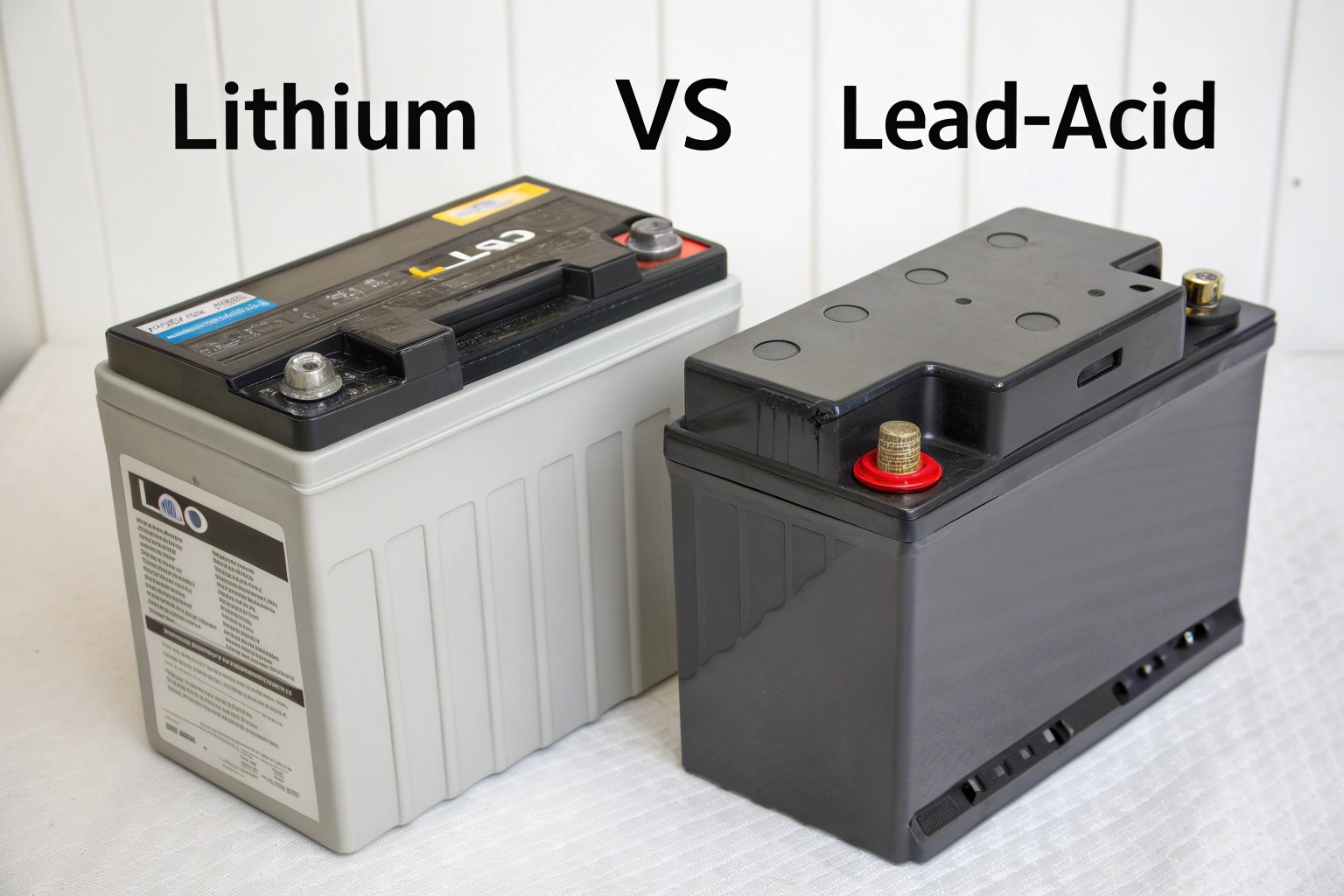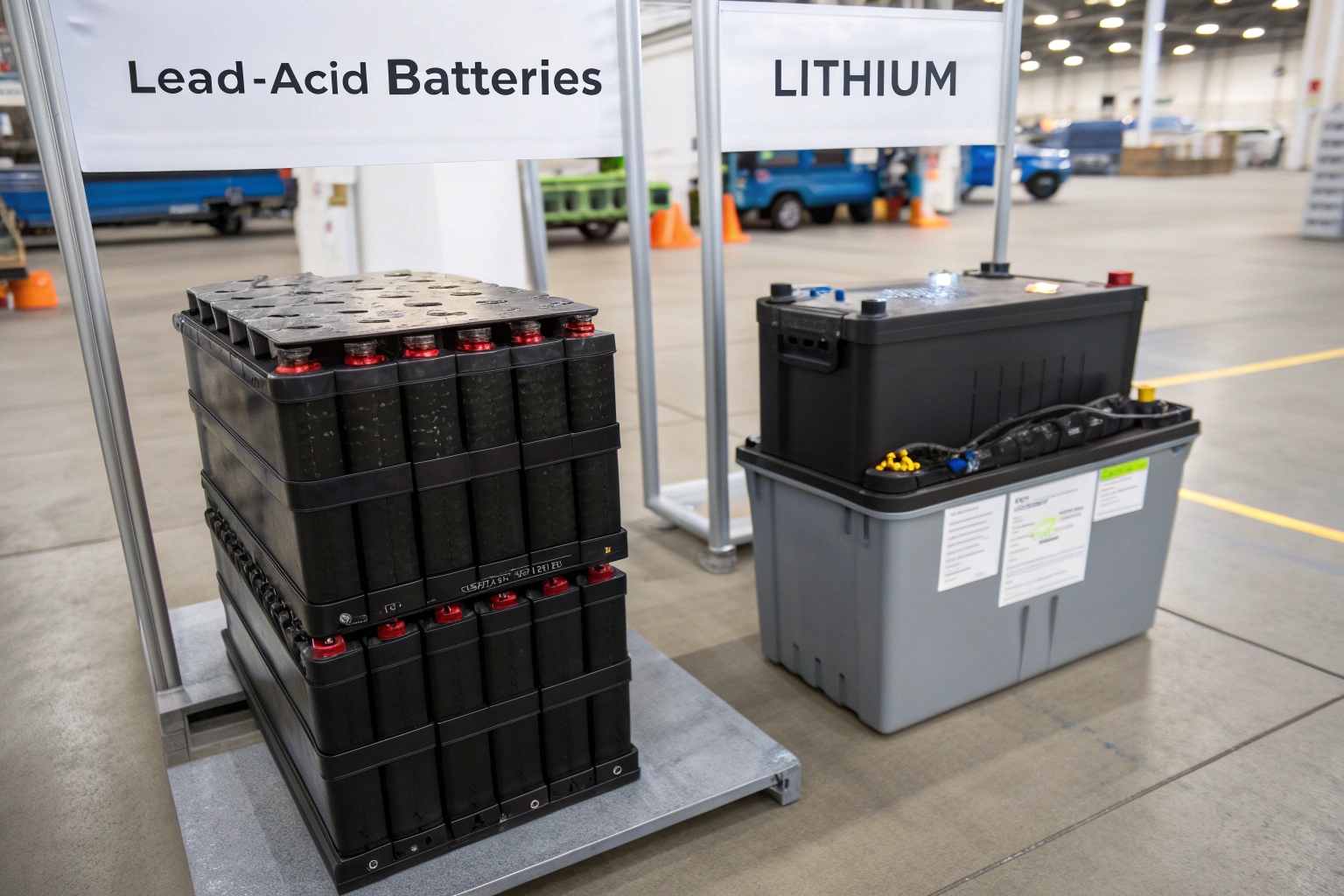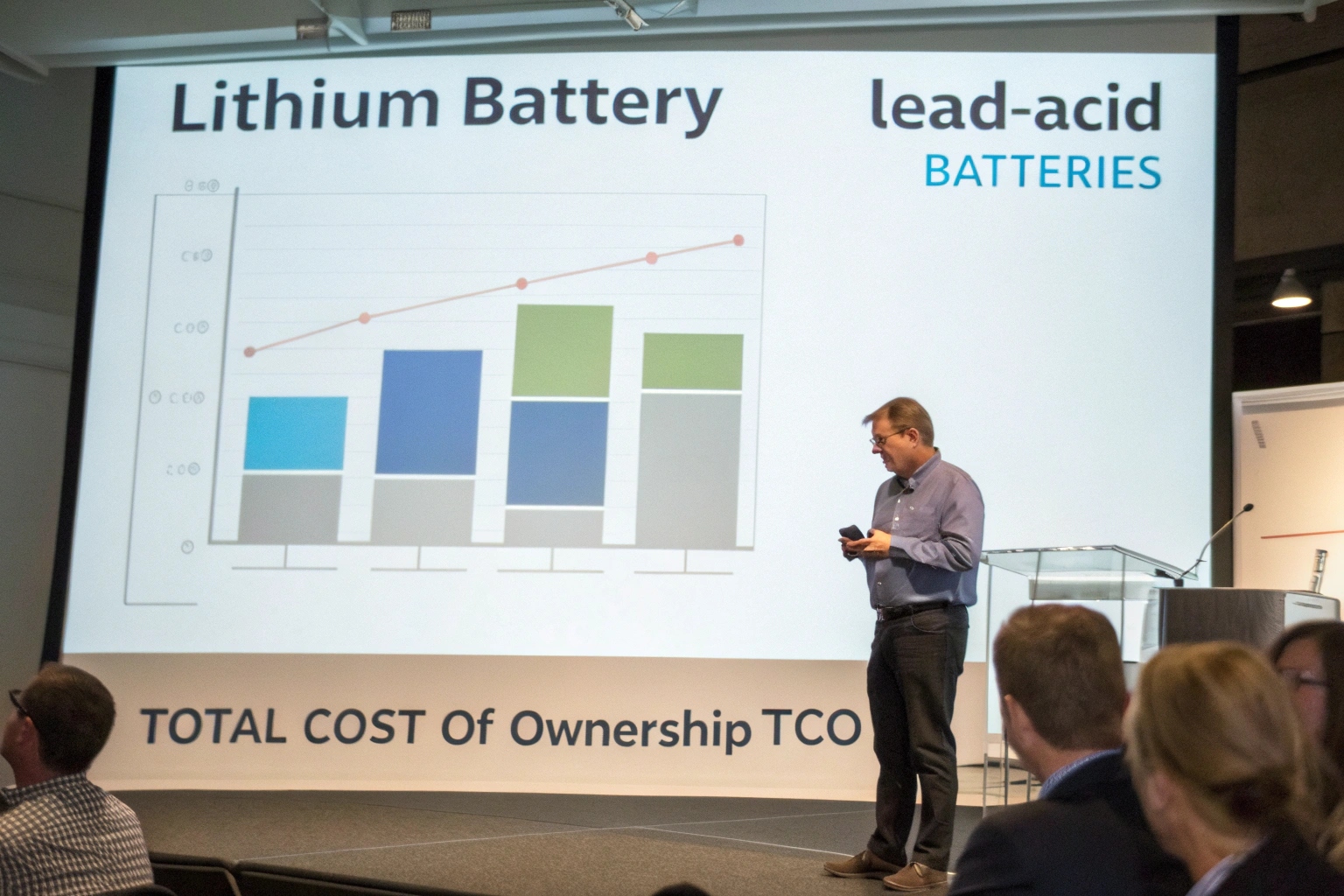Your customer is confused by battery options and just picks the cheapest one. Now they're angry because their new tricycle can't perform as needed, and they're blaming you.
Explain it simply: Lead-acid batteries are the budget-friendly choice for standard, light-duty use. Lithium batteries are the premium, high-performance option required for heavy-duty commercial work, long-range travel, or powering demanding accessories like hydraulic lifts and air conditioning.

As a factory, we ship thousands of electric tricycles, and the battery choice is the most important decision that determines customer satisfaction. The biggest mistake an importer can make is selling a vehicle that is not powerful enough for the job. Your role is not just to sell a tricycle, but to sell the right solution. Helping your customer understand this choice makes you a trusted expert and ensures they get a vehicle that makes them money, not one that causes problems.
What’s the Difference Between Lead-Acid and Lithium Batteries for Electric Tricycles?
You start explaining "charge cycles" and "energy density," but your customer just looks confused. They don't care about technical terms; they just want to know what they're paying for.
The main differences are in cost, weight, and lifespan. Lithium is lighter, lasts 3-5 times longer, and delivers more consistent power but has a higher upfront cost. Lead-acid is heavy and has a shorter life but is significantly cheaper to buy initially.

Think of it like choosing between two types of work boots. The lead-acid battery is like a standard, heavy rubber boot. It’s cheap and it works for a while, but it’s heavy to wear all day and you’ll need to replace it every year or two. The lithium battery is like a modern, lightweight, high-performance work boot. It costs more at first, but it’s lighter, more comfortable for all-day use, and will last for many years. You need to guide your customer to the boot that fits their job.
Let's break down the key differences to make it easy to explain.
| Feature | Lead-Acid Battery | Lithium-Ion (LiFePO4) Battery | What This Means for the User |
|---|---|---|---|
| Upfront Cost | Low | High (2-3x more) | Lead-acid is easier on the initial budget. |
| Lifespan | 300-500 Charge Cycles | 1500-2500+ Charge Cycles | A lithium battery will last for many years, avoiding replacement costs. |
| Weight | Very Heavy | Light (about 1/3 the weight) | A lighter trike has better range and is easier to handle. |
| Performance | Power fades as it discharges | Consistent power until empty | The trike won't feel weak or sluggish when the battery gets low. |
| Maintenance | May require checking sometimes | Zero maintenance | Less work for the owner. |
Which Battery Type Is Better for Different Electric Tricycle Use Cases?
Your customer bought a basic, lead-acid trike for his farm. Now he's complaining that it struggles to carry heavy loads up a small hill. You sold him the wrong tool for the job.
Lead-acid batteries are fine for basic commuting and light errands with minimal load. For any demanding commercial use—like taxis, heavy cargo, or sanitation—a lithium battery is the only reliable choice. The application must determine the battery.

From our factory floor at AGL-Trike, we see exactly where these tricycles are going and how they are used. We build heavy-duty sanitation vehicles and powerful tuk-tuks, and we would never recommend a lead-acid battery for them. The power demand is simply too high. Equipping a commercial vehicle with a lead-acid battery is like putting the engine of a small scooter into a large truck. It will fail. You must guide your customer based on how they will use the vehicle every day.
Here are the most common scenarios:
- Electric Tuk Tuk Taxis: These vehicles run all day and often use powerful motors (3000W or more) to carry passengers quickly. They need the long electric tricycle range and consistent power delivery of lithium. A lead-acid battery would die mid-day and lose power on hills, costing the driver income.
- Agriculture Farm Tricycles: Farmers need high torque to haul heavy loads of crops or equipment. This requires pulling a lot of power from the battery at once. Lithium handles this demand without a problem, while a lead-acid battery's voltage would sag, making the vehicle feel weak.
- Enclosed Electric Mini-EVs: When a customer wants a range of over 100km or wants to run air conditioning, lithium is non-negotiable. To get that much range from lead-acid would require so many batteries that the vehicle would be too heavy to be efficient.
- Sanitation Garbage Tricycles: A sanitation vehicle with a hydraulic dump bed for lifting 3-5 cubic meters of trash needs a massive burst of power. This type of deep, heavy discharge would permanently damage a lead-acid battery very quickly. The high power-to-weight ratio of lithium is essential here.
How Do You Justify the Higher Cost of Lithium to a Customer?
The customer sees the higher price for the lithium option and immediately says, "No, that's too expensive." You risk losing the upgrade sale or, worse, selling them an underpowered trike they'll regret.
You justify the cost by shifting the conversation from initial price to the long-term "Total Cost of Ownership" (TCO). Explain that the lithium battery, while more expensive today, will save them money over time because they won't have to buy 3 or 4 replacement lead-acid batteries.

Of course, before you can explain the long-term value to your customer, you must first understand your own landed cost. It's important to remember that shipping lithium batteries involves different regulations and costs than lead-acid. They are often classified as Dangerous Goods, which can affect your freight expenses and customs clearance. If you are not yet clear on these differences, it's a critical detail to get right. We've prepared a separate article specifically covering how to handle the import and shipping of different battery types.
This is a business conversation, not just a technical one. For a commercial user, the tricycle is a tool to make money. A reliable tool is worth a higher investment. I always ask our B2B clients to present a simple calculation to their end-users. It makes the value immediately clear and shows that you are looking out for their best financial interest.
Here’s an easy way to explain it:
- A lead-acid battery set might cost $400 but needs replacement every 2-3 years.
- A lithium battery set might cost $800 but lasts for 7-10 years.
Over a 7-year period, the customer will buy one lithium battery for $800. Or, they will buy the initial lead-acid battery and then 3 more replacements, spending a total of $1,200 ($300 x 4).
By spending more today, they save $400 over the life of the vehicle.
Furthermore, you must stress the "cost of downtime." When a cheap battery fails, a taxi driver loses a day's income. A farmer can't get their crops to market. That lost income is far more expensive than the initial saving on the battery. A reliable lithium battery is a form of business insurance.
What Do Most End Users Want in an Electric Tricycle Battery?
You’re talking about TCO and charge cycles, but the customer still seems unsure. You’re not quite speaking their language. What do they really want to hear?
Ultimately, end users want peace of mind. They want to know two things: "Will this battery reliably get me through my entire workday without dying?" and "How long will it be before I have to spend money on this again?"

Your customers are not buying a battery; they are buying confidence. They are buying the ability to do their job without worrying about their equipment. Your sales pitch should translate technical features into practical, everyday benefits that address these core desires. The goal is to build trust by showing you understand their daily reality.
Here is how you can translate features into benefits they understand:
- Instead of saying: "This is a 60V 50Ah lithium battery."
- Say this: "You can complete your entire 8-hour delivery route and still have power left when you get home. You won't have to worry about 'range anxiety' ever again."
- Instead of saying: "Lithium has no voltage sag."
- Say this: "You will have full power to climb that steep hill at the end of the day, even when the battery is low. The trike will feel just as strong in the evening as it did in the morning."
- Instead of saying: "This has 2,000 charge cycles."
- Say this: "You can 'fit and forget' this battery for the next 7 years. It's a one-time investment in reliability, so you can focus on your business, not on repairs."
Conclusion
The right battery choice is fundamental to customer satisfaction. Guide your clients by focusing on their specific job, explaining the long-term value over the short-term price, and you will build a reputation for quality.

